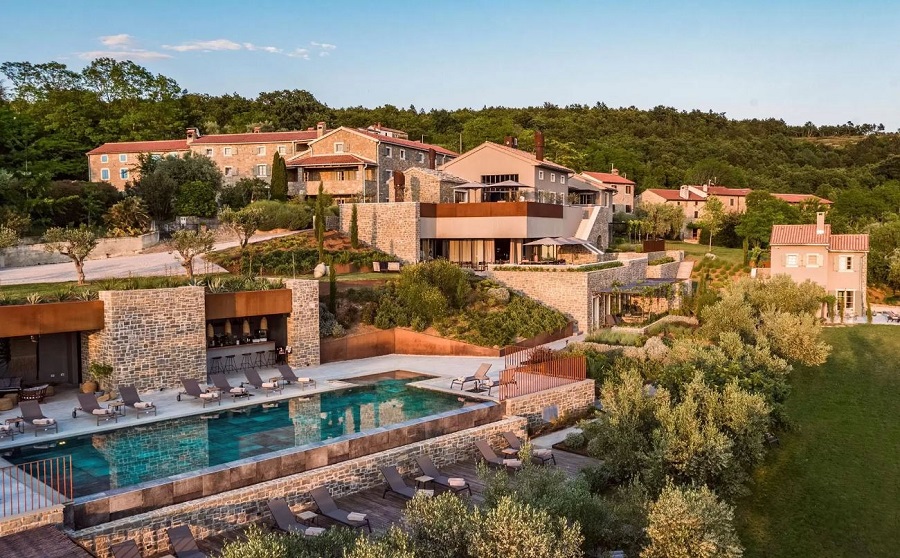Inland Istria, Croatian Tourism's Greatest Success Story
May 28, 2023 - As the world talks of sustainable tourism, a quiet revolution in the olive groves, vineyards, and forests of inland Istria is showing how it is done.
Back in 1998, in a forgotten tiny hillside village in northern Istria called Ipsi, close to the Slovenian border, local man Klaudio Ipsa made a decision which would start a revolution in tourism in the region. A decision people laughed at, declaring him crazy.
In this picturesque village of just 18 people, down from a previous 126 just a few years before, Ipsa decided to revive 100 olive trees, as well as plant another thousand and start producing high-quality extra virgin oil.
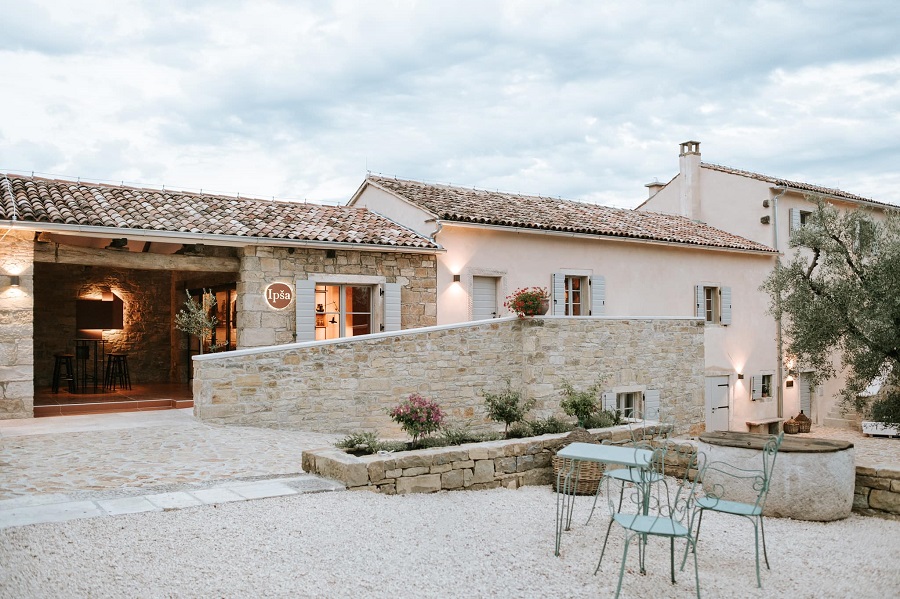
(Ipsa oil and wine in Ipsi, where the Istrian Flos Olei journey began)
Back then, inland Istria was not well-known for tourism, the focus more on mass tourism on its coast, and many of the villages inland were somewhat abandoned, or at least severely depopulated. While many locals produced their own olive oil, it was not a region known for its quality extra virgin olive oil at all.
Until a few years after the planting of those 1100 trees by Klaudio Ipsa.
Fast forward five years, and the first harvest in 2003. Fast forward another two years to 2005, and the Ipsa extra virgin olive oil became the first in Istria to be included in the illustrious Flos Olei Guide, akin to a Michelin Guide for olive oil, and a publication which traditionally fawned over the quality of olive oil from the likes of neighbouring Italy.
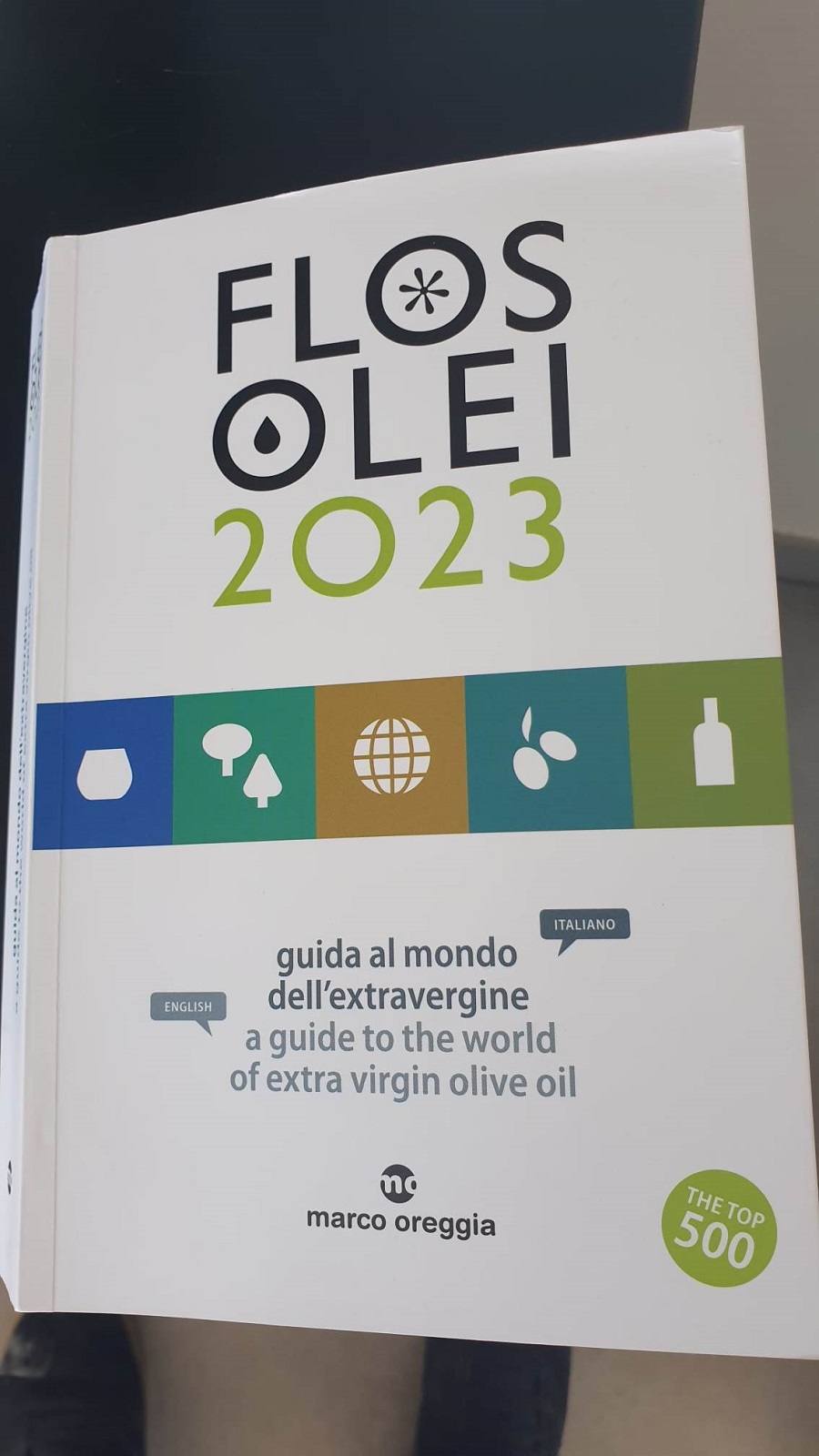
Other olive producers took note and - working with a team dedicated to raising the level of quality of Istrian quality in gastronomy - progress was swift. Only nine years after Ipsa's groundbreaking success, Istria was named as the best olive oil region in the world by the esteemed publication, with more than 10% of Istrian olive oil producers in the global top 500. An extraordinary achievement. In the latest, 2023 edition, there are 57 olive oil producers from Croatia in the world's top 500 - 56 of them from Istria, making up 11% of the global top 500. In third place is that man Klaudio Ipsa, with 98 points out of a hundred.
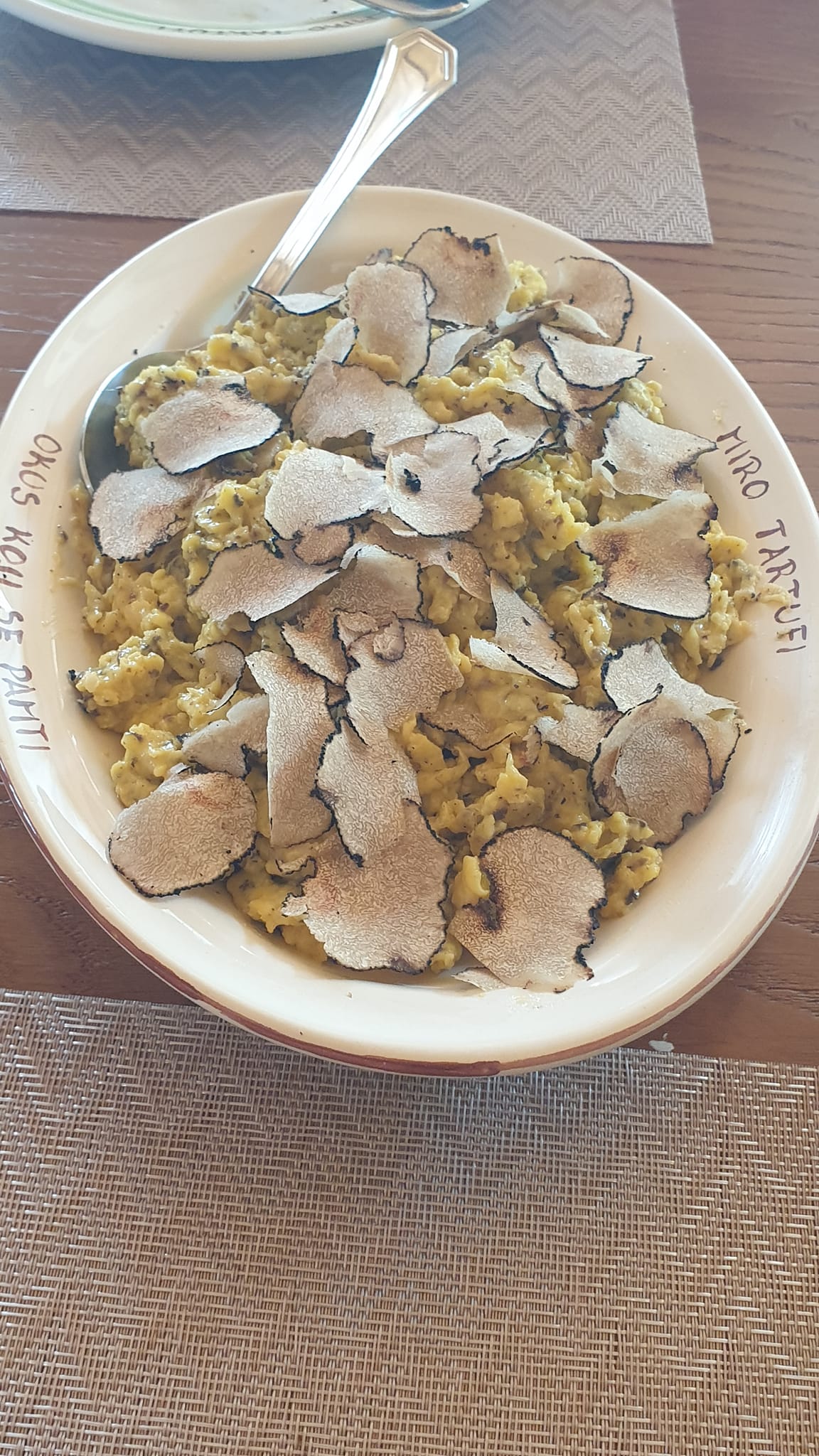
(Scrambled egg and fresh truffles from the morning hunt with Miro Tartufi in Motovun)
Meanwhile, down the hill in Livade, just below the picturesque town of Motovun, and just a year after Ipsa planted those trees, inland Istria was about to cause waves on the global gourmet scene after another local, Giancarlo Zigante, went out with his dog one morning.
His truffle-hunting dog, Diana.
Truffles were a part of the Istrian scene but it was not a region recognised internationally for its truffles. Until Giancarlo came home on November 2, 1999, with what the Guinness Book of Records described as the world's biggest truffle, weighing an astonishing 1.31 kg. Istria's arrival on the global truffle map was assured, and the region has worked hard to develop truffle tourism - it is now one of the most recognisable brands of Istrian cuisine.
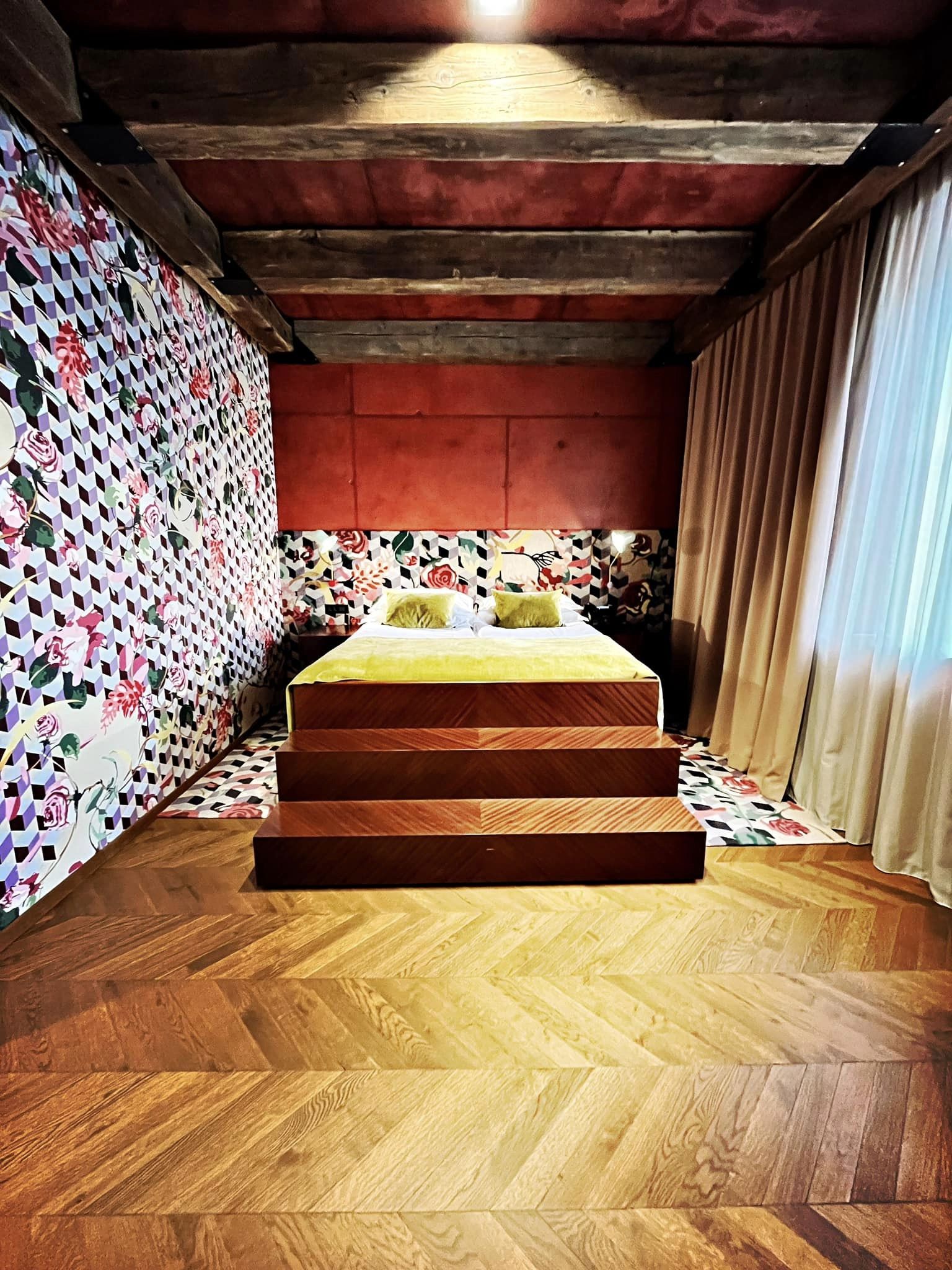
(Roxanich Design Hotel, Restaurant and Winery, a quality addition to truffle-hunting territory in Motovun)
Four years before the truffle discovery, and immediately after the Homeland War, the first luxury tourism tour of Croatia from the USA was conducted by Wanda Radetti in 1995. Istria had its historic charm back then, she told me over dinner at Hotel Ambasador in Split recently, but the wine was terrible. It was a choice of red or white, and very little of it was memorable.
About the same time - a year earlier in 1994 - Gianfranco Kozlovic, from a family wine-growing tradition dating back 200 years - decided that he wanted to focus on quality production. He was the first in Istria to introduce cold fermentation and the first harvests of commercial importance in 1994. Just three years later, at the Vinovita Fair in 1997, the Kozlovic Malvazija was named the best white wine in Croatia. The pioneer had delivered, others followed, and today the wines from the vineyards of inland Istria are much sought after.
Olive oil, wine, truffles - three of the cornerstones of Istrian tourism today, and all three a mark of quality and excellence, and yet all three hardly featured less than thirty years ago.
(San Canzian is one of the growing number of boutique hotels powering the luxury tourism revolution in inland Istria)
Full disclosure, I am an adopted Dalmatian
I have been to Istria many times on short trips over the last 20 years, but it is not a region I know as well as I should. Having bought a house and married on Hvar, I have Dalmatia in the blood - Paradise indeed. Perhaps it was through loyalty to Dalmatia, but for some reason I never really clicked with Istria, and I have been criticised over the years (rightly) for not featuring Istria enough on TCN. I decided to try and change all that and contacted the very proactive Istrian Tourist Board Director, Denis Ivosevic, to see if he was interested in helping me get to know his region a little better.
He was. Not only that, but Denis put together an excellent 6-day programme for us (more of which you can see shortly on my YouTube channel, Paul Bradbury Croatia Expert), most of which completely opened my eyes to what I genuinely think is the greatest achievement in Croatian tourism - the transformation of inland Istria into perhaps Croatia's top luxury and gourmet region. A claim that would have been laughable in the mid-1990s, when Denis and his team started their mission to transform the region into a quality tourism destination moving away from mass tourism and focusing on the quality of the local produce, its nature, and its cultural heritage.

(One vision, one valley - Kozlovic)
I hadn't realised that Istrian tourism before the war was essentially mass tourism on the coast, and that many of the inland villages were completely dead. Driving through those picturesque rolling hills last week, past winery after winery, boutique hotels, thriving family farms, it is hard to imagine that it was apparently one of the poorer regions of Croatia before the war. Take away the quality wine, award-winning olive oil, record-breaking truffles, those luxury boutique hotels, and inland Istria must have been a different proposition.
Denis and his team worked hard to persuade local producers that Istria was too small to compete with quantity, and that its best chance was to focus on quality, quality, quality. He was there to encourage Ipsa to take those initial steps, as well as Kozlovic and all those who followed. By focusing on quality, education, and best practices elsewhere, slowly the project to transform inland Istria started to take shape.

(One vision, one valley - Kabola)
I was not long into my Istrian journey last week before I realised one thing - inland Istria was a region of individual passion fitting into a collective strategy to really develop the region on so many levels. One family, one valley, one vision, I felt myself saying on more than one occasion. An individual project with few to no neighbours, a quality addition to the general picture. Individual gourmet excellence, all with a unique flavour and character.

(One vision, one valley - Roxanich)
And for several places we visited, there seemed to be a pattern. It started out with making wine or oil, was followed by oil or wine, then a restaurant, then a place to stay. Education, education, education. Quality, quality, quality.
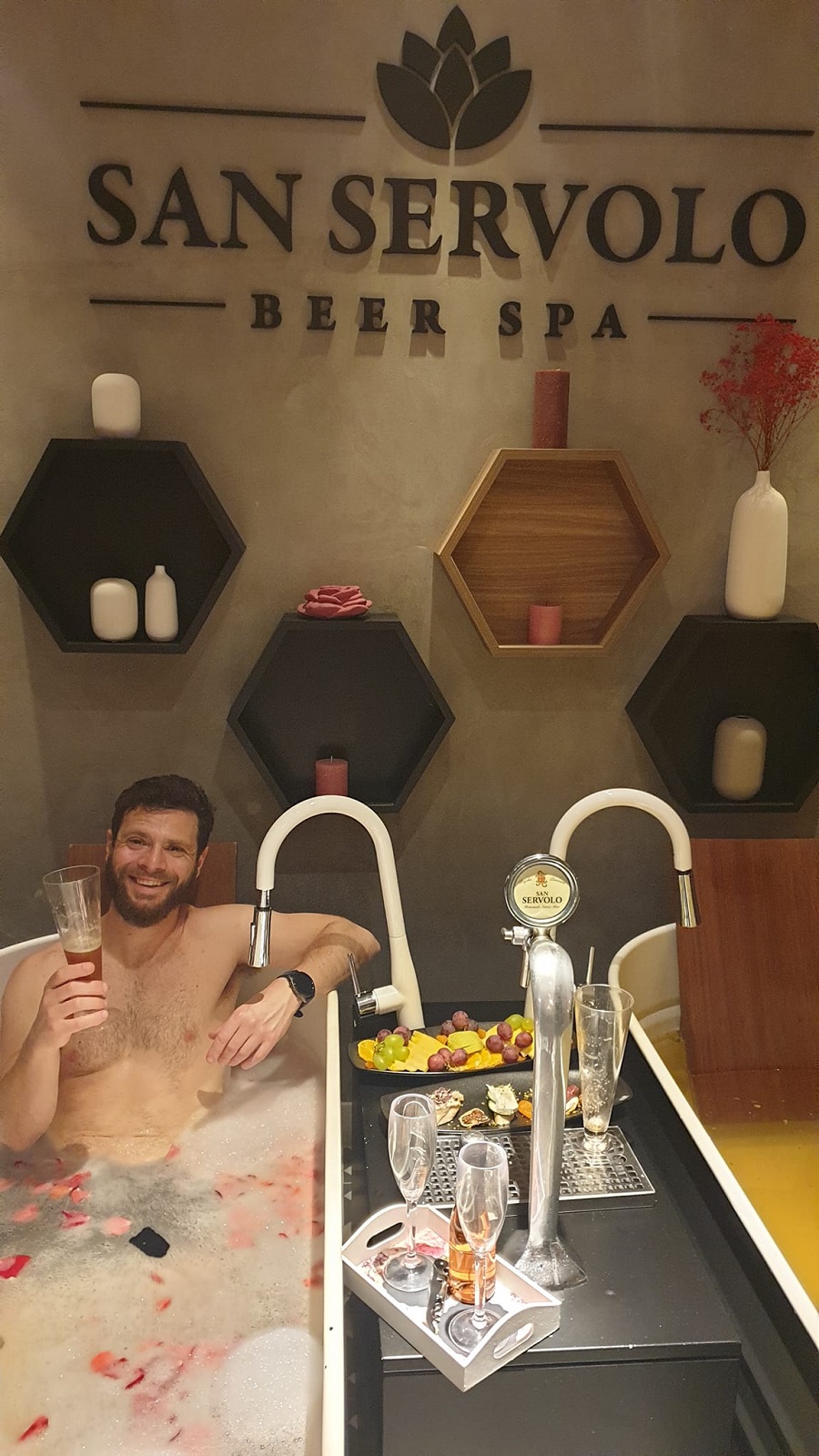
(The San Servolo beer spa for two - a beer bath for one, a rose petal for the other - with draught San Servolo on tap)
It was a wonderful week, where I spent much of the time admiring views of spectacular vistas, glass in hand, marvelling at the individual host of the moment. The incredible success of the San Servolo beer factory come restaurant, spa (and I DO recommend the beer spa), hotel, restaurant, mobile home complex, with a trattoria to come.
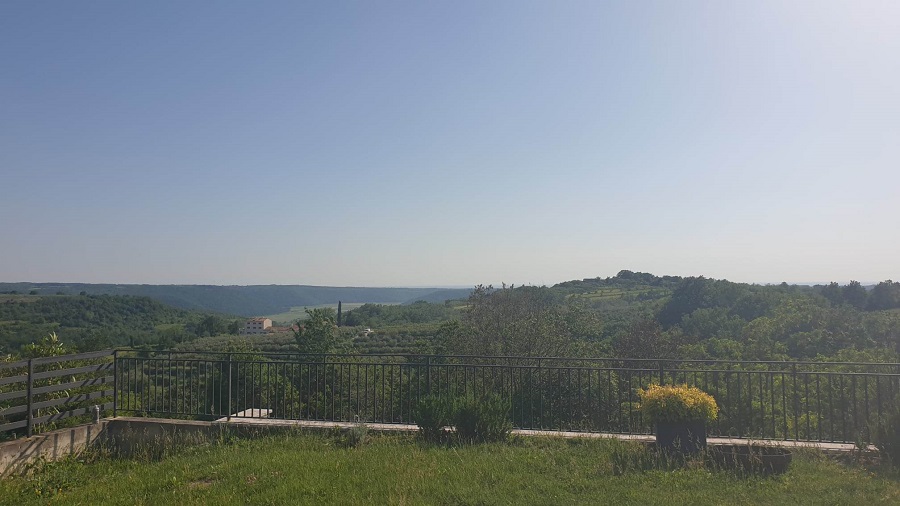
(One vision, one valley - Clai)
The fabulous wineries and views of Kabola and Kozlovic, followed by the magnificent Roxanich in Motovun. Boutique hotels such as Roxanich, San Rocco, and the discovery of the trip - Clai.
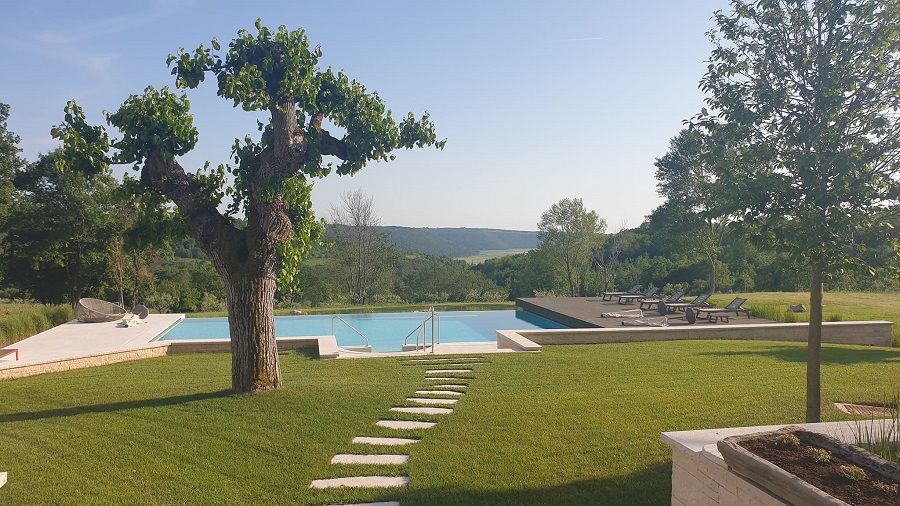
(The only property in the view from the Clai winery - Istria's most luxurious rental - a small part of the garden)
It started as a visit to yet another excellent winery, with its own stunning view over the valley. Another case of one vision, one valley. But then we were taken to see the rest of the project, which included the most expensive villa in Istria at 49,000 euro a week (sleeps 20), and a quite extraordinary dinner at a restaurant whose name did not seem that promising - Stara Skola, or Old School, in Krasica, which is being run by famous Swiss-Canadian chef, Priske Thuring.
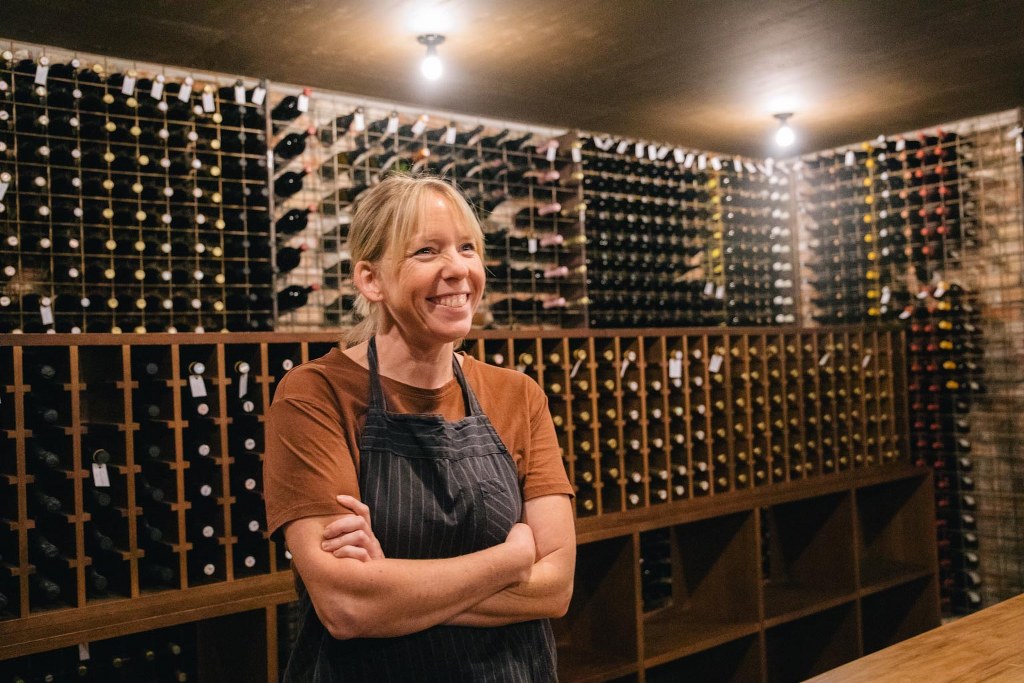
I will cover the food in a separate article - one of the best meals I have had in Croatia - but the story of Stara Skola in many ways symbolises the regeneration of inland Istria for me. The school itself closed down 33 years ago, a not atypical event in the rural parts of Croatia at the time (or since). Falling into disrepair, the school was bought as part of the Clai project, Thuring persuaded to come on board, and the school then reopened as a fine dining restaurant with a zero waste policy, meaning that Thuring's menus are VERY creative and changing daily. With a commitment to buying local, many of the former pupils are once more returning to school more than 30 years later - this time to deliver fresh produce from their gardens to the restaurant kitchen. The janitor all those years ago is once more working at the school, tending the garden and other chores.
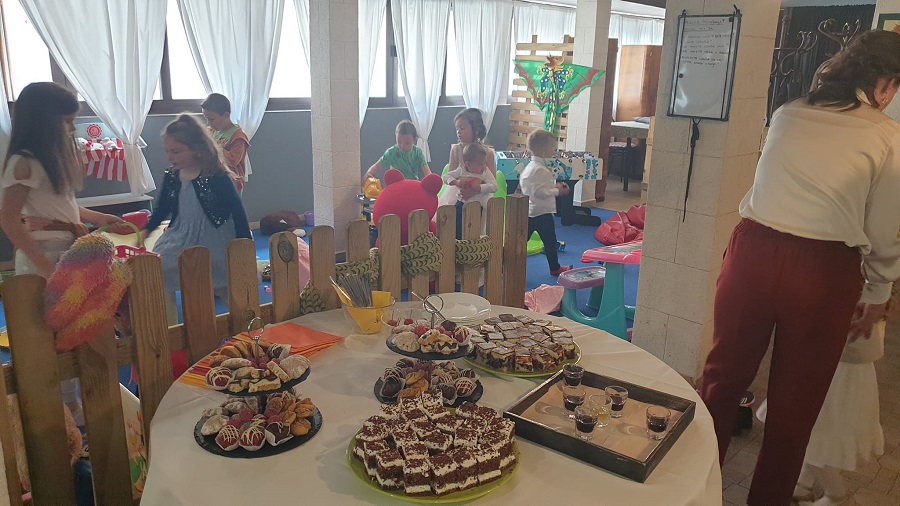
(Bursic in Vodnjan - a family prsut experience)
The quiet revolution of quality, celebrating local, and excellent service is spreading nicely all over inland Istria, and it is extending to other areas too. I have tasted a lot of prsut in my time here, but I have never been to a prsut tasting place as Bursic in Vodnjan, which has outstanding facilities in addition to the excellent prsut, such as a well-equipped kids' play area. And if you are looking for a fabulous and (I think) unique prust product, don't miss the pancetta chips.
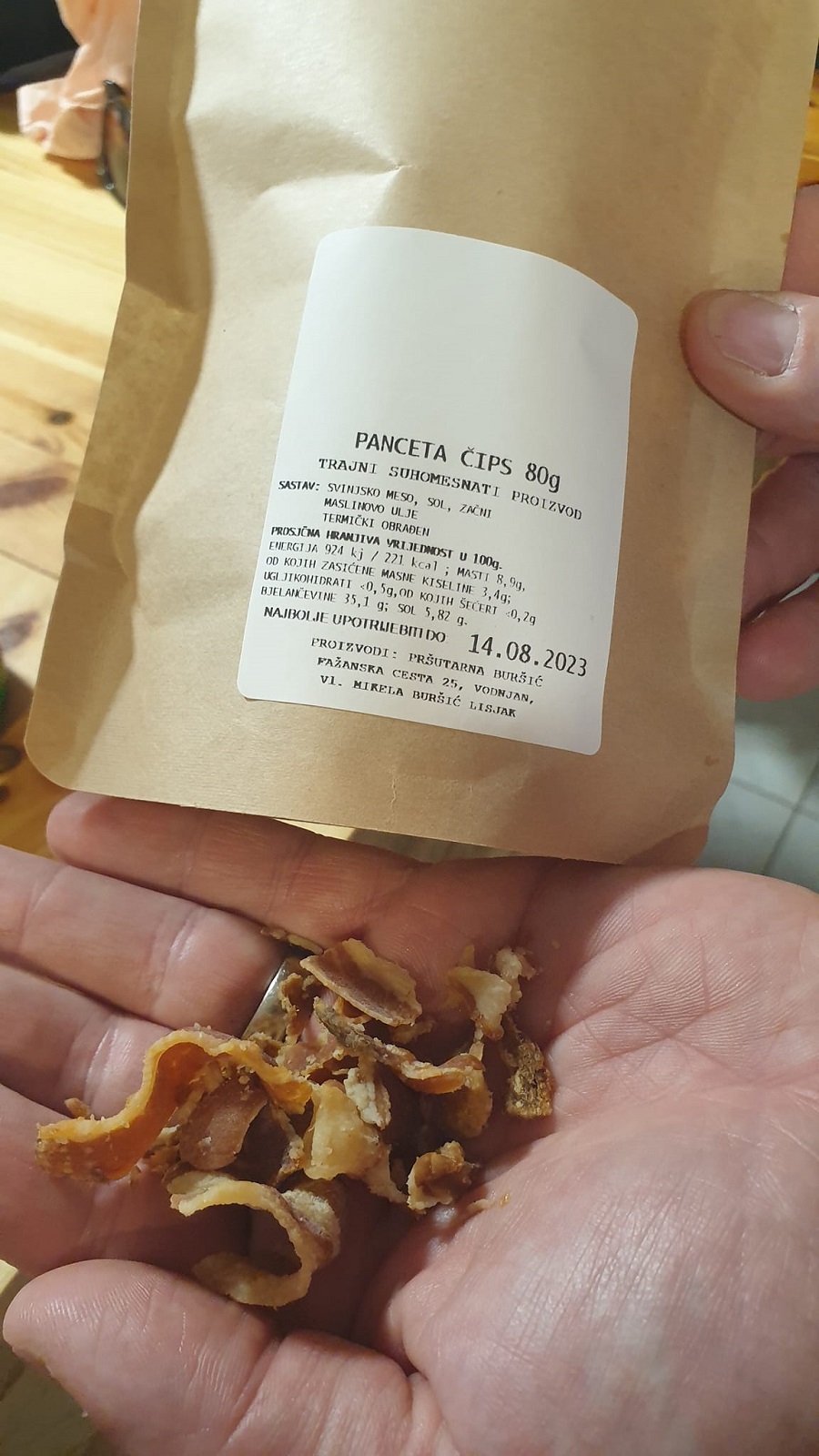
(Pancetta chips from Bursic in Vodnjan - just try them)
The hotels and restaurants are all buying local, helping small producers to develop their businesses, while also promoting them. It is a region that seems to be working in perfect harmony, developing an eco-system, which is increasingly interlinked. And all the hotels were full in May. Not only that, but guests were not rushing to the Adriatic, as one might expect, rather luxuriating in the nature, peace and quiet, as well as the traditions and culture of the hilltop towns around.
And then the statistic that truly blew my mind from Denis - and hark back to where inland Istria was in terms of development 30 years ago.
"The average room rate on the Istrian coast is 85 euro a night, and the average occupancy is 90 days.
"The average room rate in inland Istria is 290 euro a night, and the average occupancy is 120 days."
An incredible 3.5 times higher spend, and 33% longer stays. And all from a standing start compared to coastal tourism which is very well developed.
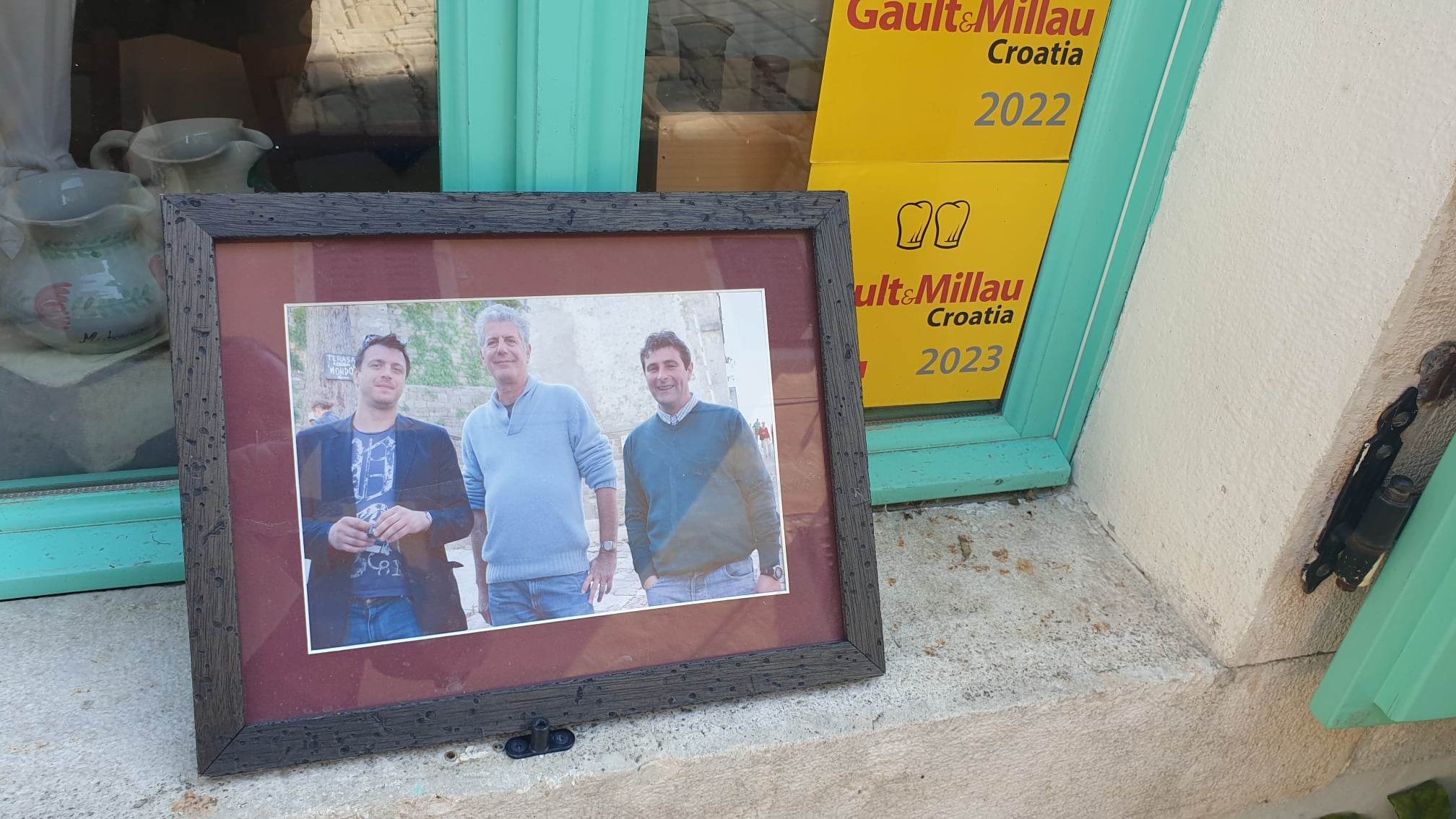
As I wandered through the delightful old town of Motovun, my guide pointed out a photo at a local restaurant of Anthony Bourdain, who had dined there on his famous No Reservations visit back in around 2011. It seemed somehow apt that he too had come to discover a region about which he knew nothing but left waxing lyrical.
Inland Istria is a phenomenal experience and a showcase example on how to work with what you have to develop a destination. An example of how a coordinated vision and the passion of individual visionaries working in tandem can produce stunning results.
As a Dalmatian boy, colour me impressed.
(Paul Bradbury visited inland Istria in May, 2023, as a guest of the Istrian Tourist Board.)
****
You can subscribe to the Paul Bradbury Croatia Expert YouTube channel here.
What is it like to live in Croatia? An expat for 20 years, you can follow my series, 20 Ways Croatia Changed Me in 20 Years, starting at the beginning - Business and Dalmatia.
Follow Paul Bradbury on LinkedIn.
Croatia, a Survival Kit for Foreigners is now available on Amazon in paperback and on Kindle.

'Quietest Rally in the World' Nikola Tesla EV Kicks Off in Istria
May 21, 2023 - A decade after its first edition, one of the best promotional events in Croatia kicks off in Istria - Nikola Tesla EV Rally 2023.
If I was looking for a symbol to promote the very best image of Croatia, I don't think I could come up with something better than the Nikola Tesla EV Rally, an annual event which celebrated 10 years when it kicked off in Rovinj yesterday.
This year's event, the longest ever at 10 days, will take in the delights of Istria, the Kvarner and Dalmatian coasts, in a 5-star tour of the very best that Croatian has to offer. The participants, predominantly Tesla drivers from all over the world, congregate each year to sample the best of Croatian luxury accommodation and gourmet experiences, interspersed with tourism sightseeing and speed tests at Vrsar Airport.
Imagine the symbolism. In modern Croatian, the birthplace of Nikola Tesla in Smiljan, the electric ca revolution is celebrated, while showcasing the finest nature, lifestyle, gastronomy and authentic experiences. I can think of no finer event to present the best of Croatia.
It is an event that has seen the likes of Elon Musk's mother, Maye Musk, take part (can you imagine the mother of Mr Modern Telsa driving a Tesla around the land of the birthplace of Nikola Tesla - and almost nobody noticed...), as well as the owner of the first-ever Rimac Concept_One driving his $1 million car all over Croatia on the rally route.
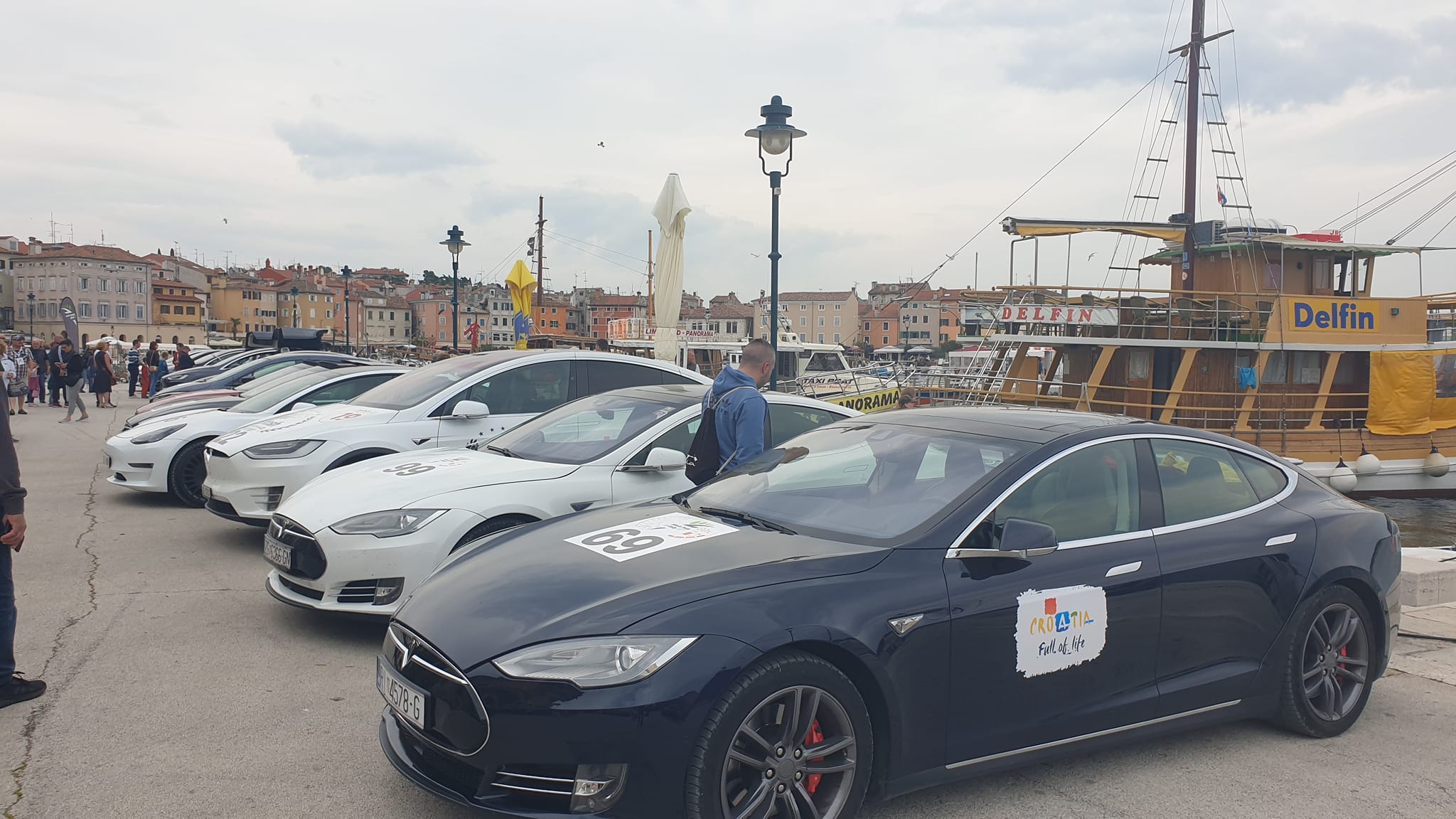
This year's event kicked off as usual in Istria, with the Teslas, accompanied by an electric vehicle from the local administration in Fazana, lining up on the waterfront to be inspected by curious passers-by, before heading off inland for Day 1 of the driving in the rally.
Beautiful Rovinj was a stunning setting, as you can see from the drone sho above, only to be followed by the first stop.

Vodnjan and its timeless and narrow streets proved to be an excellent first stop, accompanies by a walking tour of the town, which included a visit to the famous mummies in a nearby church.
Vodnjan from the air - it has recently become famous for something else - home to the first-ever Croatian unicorn, the IT company, Infobip.
One of the things I like most about the rally (I have attended parts of it 3-4 times over the las few years), is how organisers Tina and Igor Kolovat manage each year to bring some of the best culinary experiences into the program, and there is always a surprise, even for those of us who know Croatia quite well. And that surprise on the first day was undoubtedly Prsutana Bursic in Vodnjan.

I have visited many prsut producers during my time in Croatia, but none quite like this one. Apart from the delicious (and smokeless - only the wind is used in the production) prsut, I had never been to a prsut producer who has invested so much into make the prsut tasting experience a family occasion. Kids play areas! Awesome stuff.
But not as awesome as this gem of a find below, and something which I have never come across before.
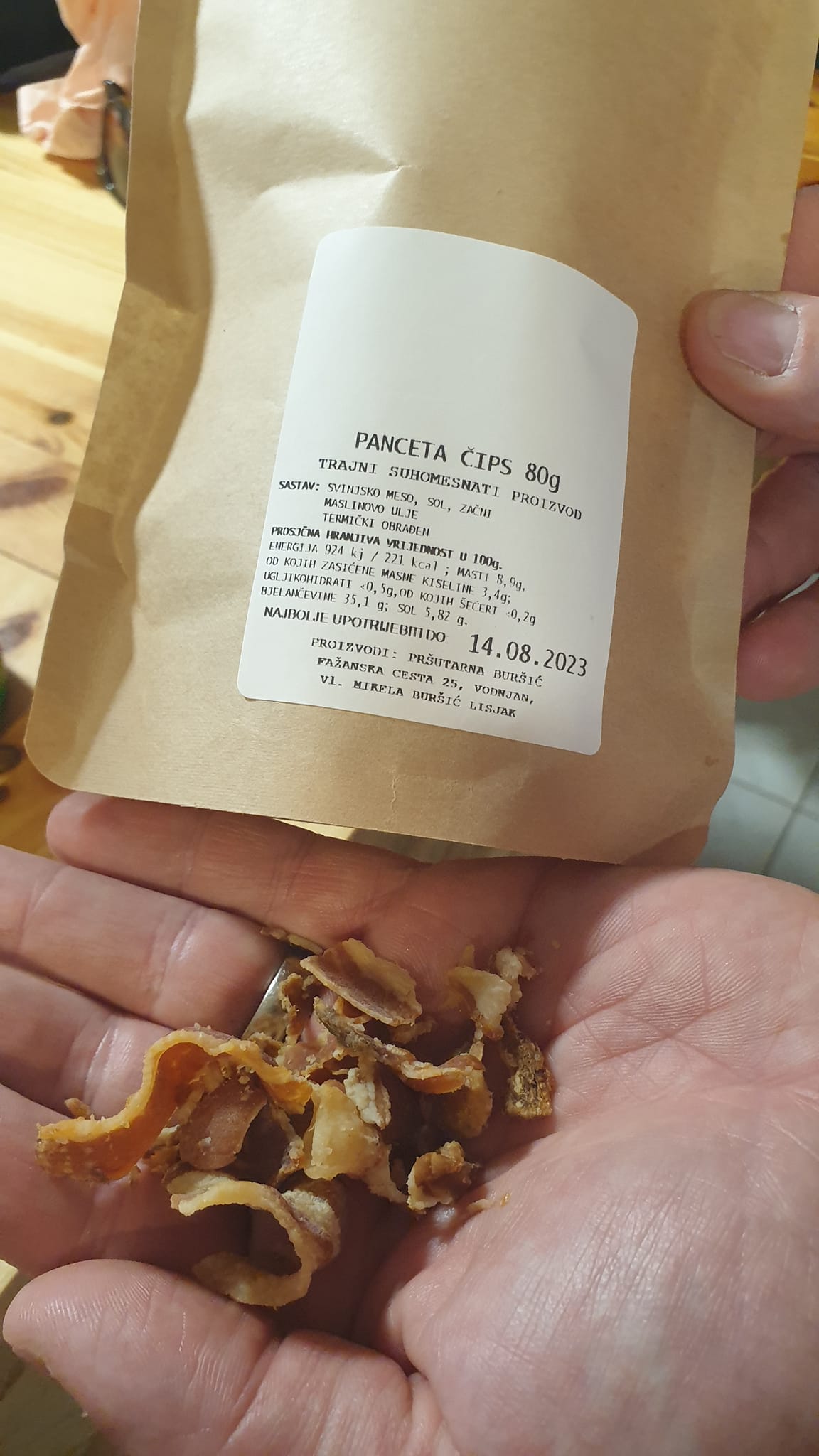
Pancetta chips. This was pork scratchings on steroids, absolutely stunning, and the perfect snack with a cold beer. It is the brainchild of the wife of the producer, who came up with it during lockdown. Just one of a range of excellent products on offer. Definitely a hidden gem worth checking out next time you are in Istria.

From there, to more familiar territory and the Bruno Trapan wine and lunch experience. Trapan is one of Istria's best-known and most innovative winemakers, and his Trapan Station is an excellent culinary experience and introduction to the world of Istrian gastronomy. While Mrs Trapan toiled away in the kitchen to produce an excellent lunch for the guests, Bruno was front of house, making sure everything worked like clockwork, while simultaneously presenting six of his outstanding wines. A fine example of a family business with a passion for excellence creating a stunning first impression to the international arrivals.
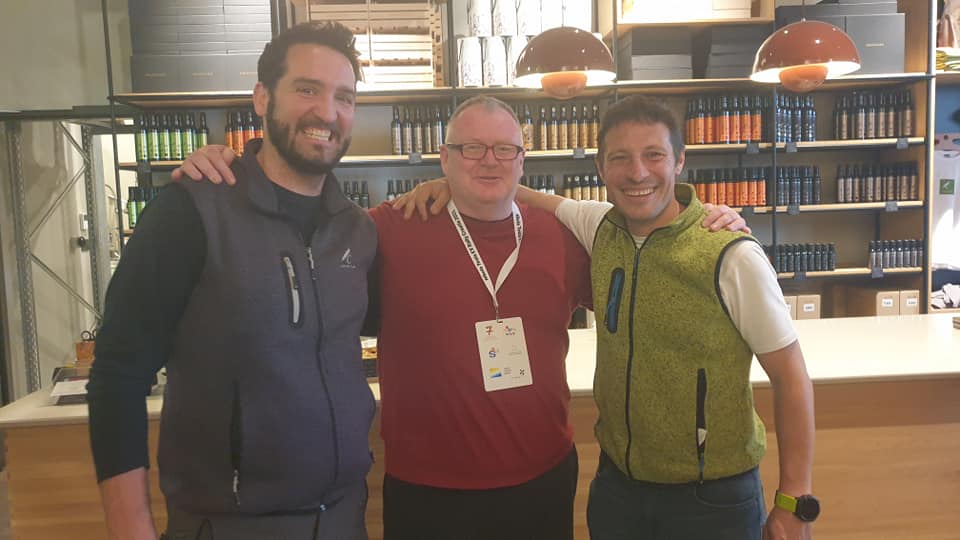
Having been seduced by the prsut, wine and food of Istria, next stop on the rally was to one of my favourite stories in all Croatia, and arguably the leading olive oil producer in the country. In 1997, a teenage boy planted 100 olive trees in memory of his late father and grandfather. His elder brother supported him in his project. Today, Chiavalon olive oil is acclaimed as one of the best in the world.
Elder brother Tedi Chiavalon was on hand to welcome the rally participants to the new Chaivalon facility just outside Vodnjan. His presentation about extra virgin olive oil was one of the most educational gourmet presentations I have heard in Croatia, giving a step by step guide about how to spot the real and the fake extra virgin olive oil. It was also a presentation with not a hint of a sales pitch, but so impressed was his audience, that the Chiavalon shop till was ringing for some time as participants lined up to get their slice of Istrian liquid gold.
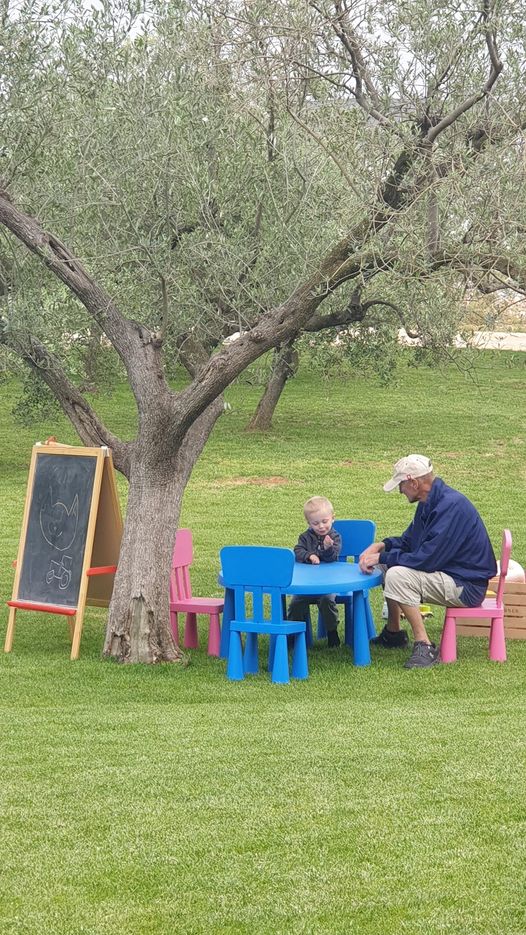
A superb opening day, rounded off with dinner at Hotel Eden in Rovinj, and then to bed in preparation for Day 2 - highlights of which include visits to Groznjan and Buzet, as well as speed racing of Teslas at the private Vrsar Airport. After that, the rally will head south to Split, while also visiting Peljesac, the Imotski Lakes, Sibenik, Krka National Park, Crikvenica and Trogir. You can see the itinerary here, and follow the rally on Facebook.
Saving Them from Extinction: Father and Son Raise Istrian Goats
May 2, 2023 - The symbol of Istria, the Istrian goats, which can be found on the Croatian coat of arms, were threatened with extinction. However, the numbers have now well improved. This was confirmed by Igor Merlić, director of the Agency for Rural Development of Istria. Last year there were only 40 Istrian goats, and today the number has reached 130.
There are about forty Istrian goats on Ivan Milohanić's (35) estate near Poreč. Ivan has been goat farming for ten years. And that's after work, as his day job is a bus driver. But his face lights up when he talks about life with this symbol of Istria, writes 24Sata.
He gets up every day around 5:30 a.m. because the goats require milking and grazing, and then he goes to his "real" job. Goats are his life and the life of his family. And his son Luka, who is still in kindergarten, already knows what he needs to do to make the goats listen to him.
"I just lift the stick, and they know how far they can go without going into the olive trees because they would chew everything," five-year-old Luka explains.
His father Ivan added that Istrian goats must have horns. Females have beards, and most have pigment on their skin and a more muscular physique than, for example, Saanen goats. The colour of Istrian goats is white, sometimes slightly beige.
They know Ivan really well
As Ivan stepped on the ground where the goats were, the goats galloped towards him. All of them. Because they know they will get something to eat. They know that Ivan never comes empty-handed. Ivan's herd enjoys 1.5 hectares of fenced land, and each one is given great attention.
"There are forty Istrian goats in my herd, and they are all wonderful. The goats are out grazing every day for 5 to 6 hours. Like other goats, they eat everything and like the bud the most because it is the sweetest. We also prepare what the goats must eat to be healthy and strong, which are cereals we produce ourselves without any additives. There is barley, oats, meadow hay... I have an OPG, so we also have olives, vines, and vegetables; everything is homemade. These days, you are wealthy if you produce your food," he said.
His Istrian goats come first to him. After driving his passengers in the morning, he returns to his goats; in the afternoon, he drives the bus again, and in the evening goes back to the goats.
"Pupica, Belinda, Kolinda (named after the former Croatian president), Maza, Sisi, Šarka... Kolinda is among the older goats; she is nine years old and is a real lady. Goats usually live for about 12 years. We produce cheese, milk, cottage cheese, and whey, as well as goat meat that is extremely tasty and of high quality. All is homemade, and people appreciate that. Everyone is happy to come back again, which makes me happy. After donkey's milk, goat's milk is the closest to mother's milk and is full of vitamins. People who suffer, for example, from bronchitis and other conditions related to the respiratory tract should drink goat's milk. The goat only eats healthy and chooses plant by plant what to eat", says Ivan. 24Sata asked him if he had a favourite in the herd.
"Pupica is my favorite"
My favorite is Pupica because I feel like we somehow understand each other. The goat senses your mood. The goat can sense it and step away if a person is nervous. Leave you alone for a bit. They'll definitely come back to be pet, and these animals are like puppies, only much more timid", Ivan said tenderly while petting Pupica.
There is beauty at every corner of his goat farm. There are currently six herds of Istrian goats in Istria, but the number is growing. Ivan started breeding Istrian goats ten years ago, quite by accident.
"First, I bought five goats when there were 34 of them in all of Istria. That was ten years ago. Now we have selection coming up, and we will only leave goats in the herd that give more milk. We will also start producing goat products. I currently milk about twenty goats, and they give about thirty liters of milk a day. I drive the bus in the morning; I return home around 9.30 to milk the goats, which takes me about two hours. Of course, my family jumps in on the work. Then I take them out to graze, drive the bus again, and milk the goats. Whoever thinks it's easy, let them try it", says Ivan and continues.
"It is still love that will help our Istrian goats to survive rather than profit. The goat is a cuddly animal and, like any real Istrian, very stubborn. In the end, they will always do what they want. I also got the horns a few times, and I can say it's a strong kick. I read that a goat remembers about fifty pictures. When I stand by the olive trees with a stick, as soon as I raise it, the goats don't go in that direction. But as soon as I leave, they will gladly bypass the rules and enjoy some olives", concluded Ivan laughing.
For more, make sure to check out our dedicated News section.
Istrian 2000-Year-Old Stage: Small Roman Theatre Opens in Pula
April 24, 2023 - The grand opening of the renovated Small Roman Theater will be marked by a two-day music and stage program, which, apart from the inauguration of the future summer stage, is also intended as a gift to the Pula public on the occasion of the City Day celebration
The grand opening of the Small Roman Theater in Pula will take place on Pula City Day, May 5 this year. The opening ceremony will be accompanied by a sumptuous music and stage program directed by Krešimir Dolenčić and Aleksandar Švabić. The following day, May 6, the stage of the Small Roman Theater will host Perpetuum Jazzile, a Slovenian musical attraction and one of the most recognizable vocal groups in the world. This will officially celebrate the restoration of the original function of an extremely important ancient cultural monument in Pula, whose reconstruction was carried out by interdisciplinary teams of architects, designers, conservators, archaeologists, and art historians.
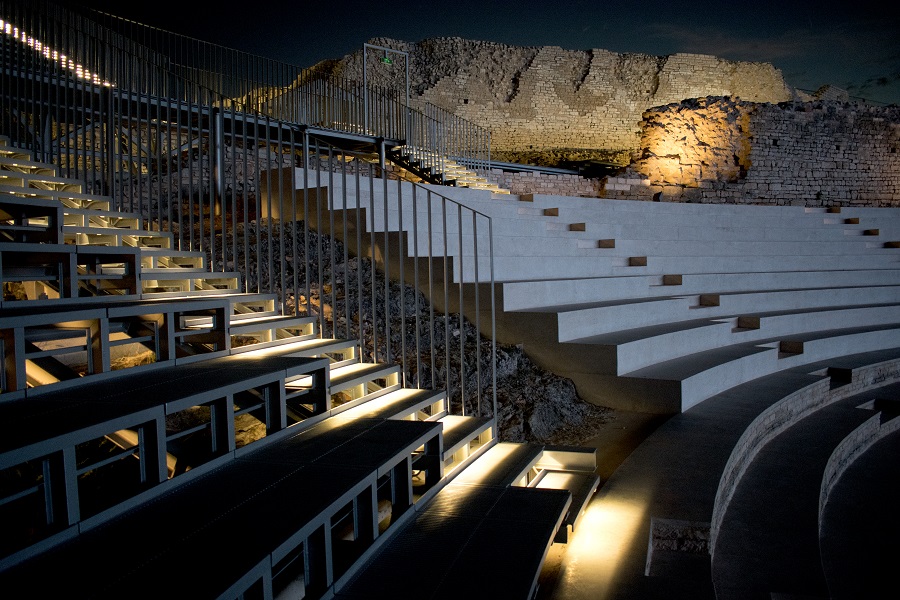
"The complex renovation project of the Small Roman Theater is behind us, and we are proud to soon present one of the most spectacular concert, theater, and performance spaces in this part of Europe. As a community, we have an obligation to protect the rich cultural heritage and at the same time think of ways to integrate this valuable cultural heritage into the modern fabric of the city so that it serves today's needs in culture, and the public gets the opportunity to enjoy a space of unique monumental value, atmosphere, and acoustic quality", said Darko Komšo, director of the Archaeological Museum of Istria.
In the first century of our era, the Small Roman Theater served the cultural needs of the then-population of Pula. The renovated version can accommodate around 1,250 people today and, just like in ancient times, it will be a medium for encounters of the audience and artists, various performers of performing arts, and its devotees. It is important to point out that after almost two decades of neglect, the Small Roman Theater was renovated using a contrasting method, using steel and white concrete, whereby exceptional care was taken to ensure that the foundations of the new construction did not touch or endanger the Roman remains of the building anywhere.
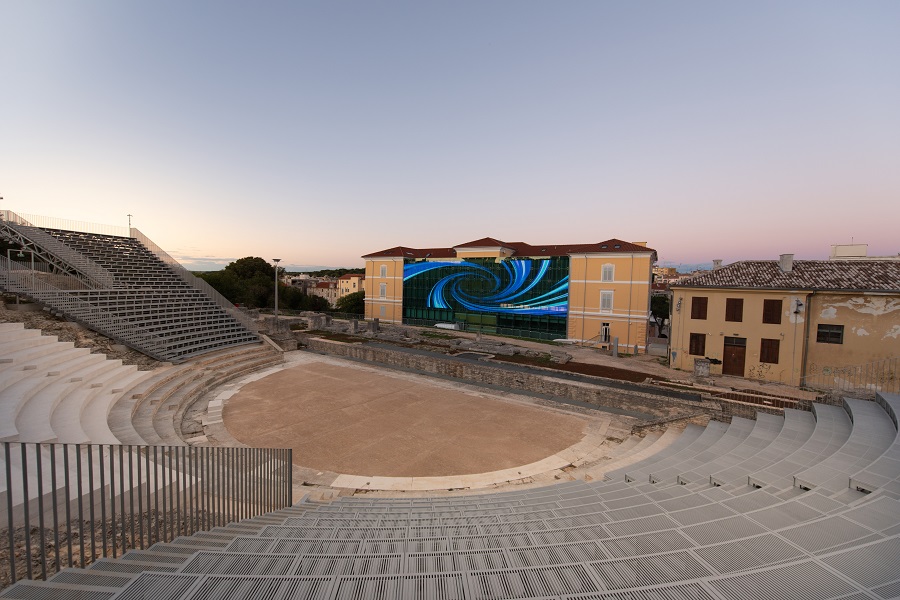
The grandstands were completely built without nuts and bolts so as not to disturb the acoustics of the space, and the height and depth of the stairs correspond to the original proportions, whereby the ratio 1:2 was respected, according to the instructions from the "Ten Books on Architecture" by the famous Roman architect from 1 century BC, Vitruvius.
Part of the Small Roman Theater of Europe project is the monumental, 330 square meters large screen that was placed on the facade of the Archaeological Museum of Istria. The reconstruction project of the Small Roman Theater received an honorable award at the Piran Days of Architecture and was also nominated for the "Bernardo Bernardi" architectural award.
The renovation of the Small Roman Theater was financed by the European Fund for Regional Development and the funds of the Ministry of Culture and Media, as well as the own funds of the Archaeological Museum of Istria.
Croatian Returnee Reflections: Danijela Andric Casson, from Dubai to Istria
April 21, 2023 - Whisper it quietly, but more and more people are relocating to Croatia from the diaspora. In a new TCN series, we meet them to find out how they are faring and what advice they have for others thinking of making the switch. Next up is Danijela Andric Casson, who moved from Dubai to Istria.
1. You made the switch to Croatia. Tell us a little about the decision process and how long it took for you to get on the plane?
To be honest, there was no plan behind it, it just happened... My Cavalier King Charles Spaniel named Kelly had developed severe asthma, and she was suffering from the dusty, sandy climate in Dubai, where we have been living since 2013. My vet suggested changing the climate for Kelly for a few days or weeks so that her lungs could recover.
No sooner said than done... we left Dubai on 20 March 2020 with one of the last possible planes to spend a few days in our holiday home in Croatia that we bought in the Autumn of 2019. A few days turned into months as all of Europe was in lockdown due to Covid 19. We enjoyed the contrast in the environment and started loving the peace, the freshness, the nature, the scents, and the freedom in Istria. I’m living now 9 months a year in Istria and 3 in Dubai which is a nice escape from the European winter! My husband travels extensively for business and so is able to use Istria as a base for his European travel while maintaining his office in Dubai for that part of the world.

2. What did your family and community back home think of your decision at the time?
No one could believe that I prefer the simple country life to my privileged and jet-set life in Dubai, least of all my mother. You need to know that, until this move, I haven't lived a day in Croatia – Yes, I've been on annual holidays over the years and we had a family home there. I was born and raised in Germany, so it was hard for my family to imagine that I was the only one in the family who moved back to my roots.
My friends from Dubai came to visit me to see with their own eyes and experience why I give rubber boots priority over high heels. Everyone, without exception, had recognised the renewed spark and happiness in me since I have been in the powerful nature & environment of Istria.
Family and friends visit us often during the year visit me regularly and enjoy the weather, nature, sea and food & wine as they explore with us the wider area.
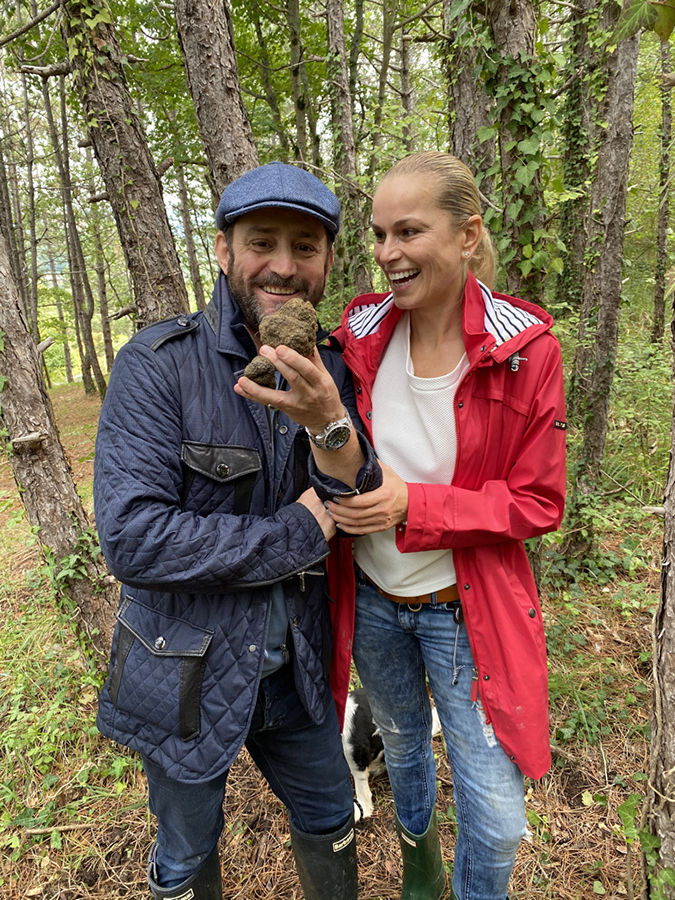
3. Where did you get your information about the realities of Croatia prior to coming?
We kind of discovered and learned as we went, relied on friends as well as great resources such as TCN and Expats Istria on Facebook. Being a native Croatian speaker of course helps tremendously.
4. What were you most nervous about making the switch? What was your biggest fear, and how was the reality of what you found?
As I slipped into it unintentionally, I honestly wasn't afraid or nervous of anything because, as I said, I only intended to stay for a few weeks. A few weeks turned into months because of the severe worldwide travel restrictions due to Covid. I'm slowly feeling my way back into everyday life - still with the thought that in a few months I'll be going back to Dubai... Now it's time to get a foothold here as well as possible and slowly come to terms with the peculiarities of the Peninsula. Research has to be done like “where is a good dry-cleaning, where are the good winegrowers, where can you eat local and good food“, questions of everyday life.
When the travel restrictions for Dubai eased in the autumn of 2020, we flew back to the UAE where I didn't stay long! I knew then that I had to go back to Istria, as Dubai no longer gave me that feeling of being at home nor comfortable. In Feb. 2021, I went back to Croatia and continued where I had left off.... I was able to continue my job online, so I didn't suffer any restrictions here.
Many things are different here compared to Dubai, I don't say better or worse, just different, but I can deal with it. Dubai, for example, is a very service-oriented country. There is nothing that is not delivered to your home whether it is things or services, could be massages, pedicures, hairdressers, chefs, blood tests, everything! Istria presents a simpler life but a rich and rewarding one on so many levels.
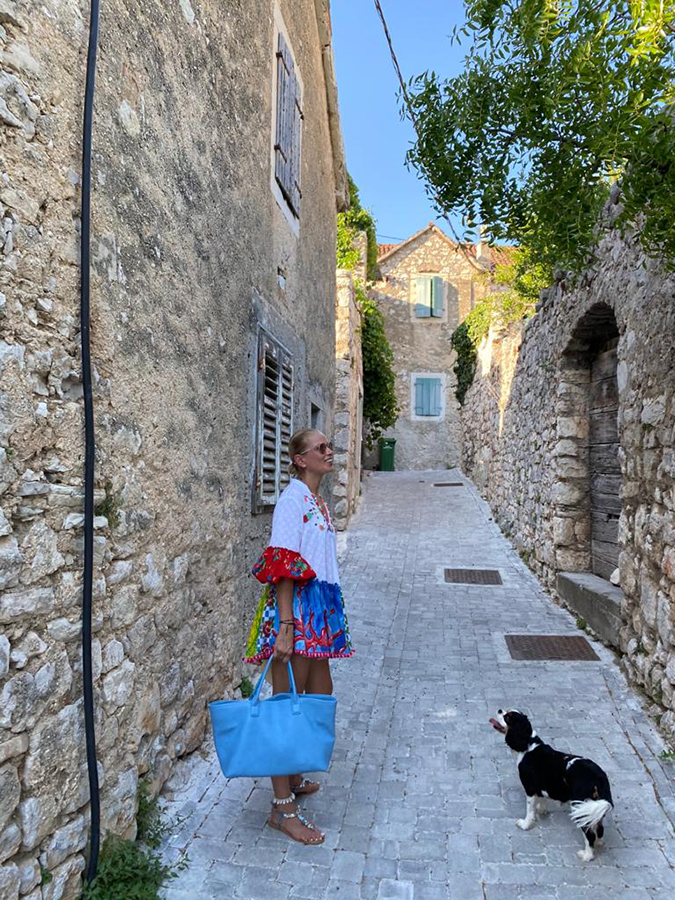
5. Think back to the time before you arrived. What were your perceptions about Croatia and how were they different from the reality you encountered?
As mentioned, I had all through my growing up years visited Croatia, keeping in touch with my roots and then thru an earlier role in travel got to travel and see most of the Country over several years and so have certainly been familiar and so, for me, the gap was not too dramatic.
6. You are still here, so obviously the pros outweigh the cons. Tell us about some of the things that you love about being in Croatia, as well as some of the things you don't like.
I probably hadn’t anticipated the kindness or help of so many people that helped us settle in, and it was a joy to rediscover the food and wonderful wines of the region. On the flip side the bureaucracy gets frustrating at times, lack of consistent supplies in the shops and, coming from Dubai I do miss truly the variety and tasted of international food, especially Asian.
We bought our house, extensively renovated & enlarged it as well as buying large plots of land and dealing with the world of lawyers, land agents, Government departments contractors, craft workers and all the trades has been crazy at times, I could write a book. The end justifies the means though, as we love the home and environment, we have created, our little piece of heaven!
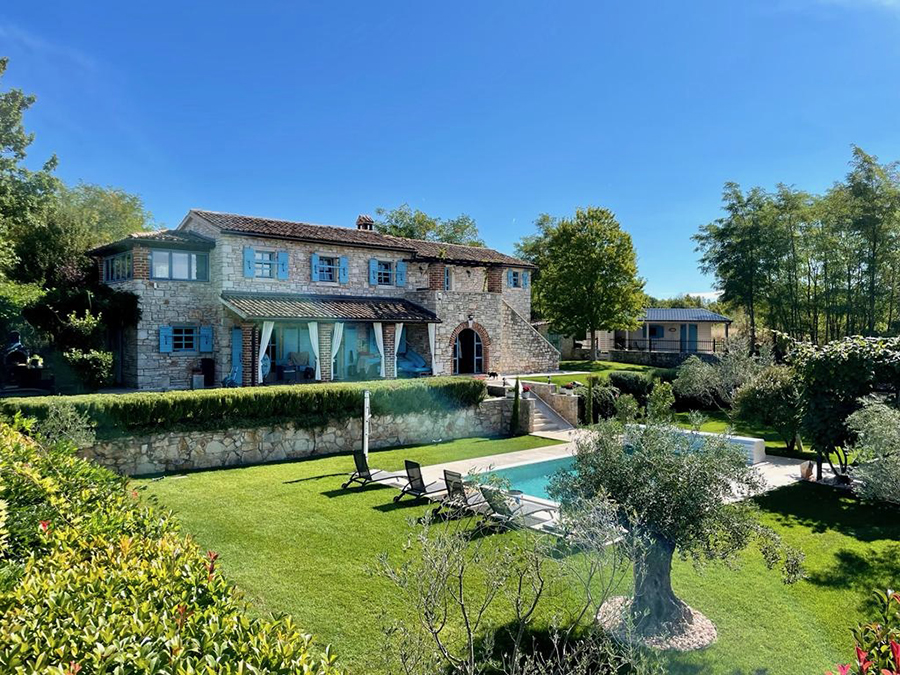
7. What advice do you have for others thinking about making the move from the diaspora?
Well, firstly, it seems the days of cheap real estate and land has largely disappeared over the past few years, as Croatia caught up with many areas of Europe. And with the Euro now in play, prices are less cheap than they had historically been. Speaking the language is pretty essential to get things done, especially with Government and locals. Healthcare is quite good on a basic level, but for more serious issues you would have to be prepared to go to Germany, Switzerland or UK.
As a professional Holistic Practitioner I’m playing my part in creating dedicated wellness retreats in Istria. The first of these will be here in September and you can find full details in this link:
Furthermore, I’m going to open my holistic practice here in Mofardini in July 1st , where we are offering Kinesiology-Session, Counselling, Nutrition & Supplement support according to your blood-group-type and parts of Traditional Chines Medicine. The treatments can be conducted in English, German and Croatian and cover a wide range of protocols. More details you will find on my homepage: www.bms-centre.com

8. How do you think Croatia can better assist those who are looking to return to the Homeland?
I never really sought nor expected help as it’s a personal decision that I was happy to make, and so then made sure to inform myself as I went along. I´m sure Paul´s new book will be of practical help to many, both a great read and practical resource!
****
Thanks, Danijela, and good luck with the retreats!
You can follow more stories in the Croatian Returnee Reflections series in our dedicated TCN section.
Would you like your returnee story - positive or negative - to be featured in this series? Contact This email address is being protected from spambots. You need JavaScript enabled to view it. Subject Returnee.
****
What's it like living in Croatia, and where can you get the best survival tips? TCN CEO Paul Bradbury and TCN Editor Lauren Simmonds have teamed up to publish Croatia, a Survival Kit for Foreigners.
Follow Paul Bradbury on LinkedIn.

Exploring The Croatian Language - The Southwestern Istrian Dialect
March the 20th, 2023 - While you will likely have heard of Istrian, or the Istrian dialect, unless you're into linguistics, you may know less about the dialects and subdialects within that scope. Have you ever heard of the southwestern Istrian dialect?
We've explored many of the dialects, subdialects and indeed languages in their own right as some linguists consider them to be which are spoken across modern Croatia. From the Dubrovnik subdialect (Ragusan) in the extreme south of Dalmatia to Northwestern Kajkavian in areas like Zagorje, the ways in which people speak in this country deviate from what we know as standard Croatian language enormously. That goes without even mentioning much about old Dalmatian, Zaratin, once widely spoken in and around Zadar, Istriot, or Istro-Venetian.
Istria is known even today for being part of Croatia that has seen enormous change, and many different groups and ethnicities pass through and live on the peninsula. It's far from just the influence of Italian and the former Venetian Empire which reigns strong in this region of Croatia. For a quick linguistic example, in Istria alone, we have Istriot, Istro-Venetian, Istro-Romanian, and the extinct Istrian-Albanian. That's far from all. In this article, we'll delve a little deeper into the southwestern Istrian dialect, which is part of the much wider category of Chakavian.
A brief history of the southwestern Istrian dialect
As stated above, the southwestern Istrian dialect belongs to the group of dialects called Chakavian and contains both Chakavian and Shtokavian features. Despite this, it is generally considered to be the most widespread Chakavian dialect in all of Istria, originating not from any Italian influence, but from the dialects spoken much further south, down in the Dalmatian-Herzegovian region. If you want to get a little more complicated, this dialect is part of the Chakavian-Shtokavian/Shtokavian-Chakavian/Stakavian-Chakavian Ikavian dialect(s). A mouthful, I know, but much like with most other dialects and subdialects, linguists have butted heads in the past when it comes to proper classification.
Because of this mix of both Shtokavian and Chakavian features, most experts believe that the origins of the southwestern Istrian dialect can be traced back to what most other dialects spoken across Istria resulted from - migration. The aforementioned Dalmatian-Herzegovian influence likely draws its origins from the arrival of Dalmatian settlers from the wider Makarska area (Central Dalmatia) in Istria back during the sixteenth century.
These people primarily spoke in a Shtokavian-Ikavian dialect which still had its own Chakavian features. When more Dalmatian settlers arrived on the peninsula from a little further north in Dalmatia, more specifically from the wider Zadar and Sibenik areas, the elements of Chakavian were even further enhanced.
Why did Dalmatian settlers move to Istria?
If you're anything even close to a history buff, you'll probably have guessed the reason for this migration - the Ottomans. The Ottoman Empire and its marauding Turks were the reason for mass migration of many different ethnicities during this period of history and indeed beyond it. It wasn't just that empire that mixed things up, however, with the then extremely powerful Venice also moving different ethnicities to Istria as the decades passed owing to Istria's dwindling native population. This is the primary reason for the emergence of the now extinct Istrian-Albanian language, for example, as ethnic Albanians also settled there.
As time rolled on, different ways of speaking emerged, and people who primarily spoke Novoshtokavian dialects arrived in Istria, having themselves come from the wider Sibenik and Zadar regions. This gave rise to the southwestern Istrian dialect as it is known and accepted today, and it is considered by many in the field of linguistics to be a post-migration dialect. The overall result of this turbulent period in history is that today, in that dialect, Chakavian features mostly prevail everywhere except in the area of the extreme south of Istria, all the way down to Premantura and its immediate surroundings.
Where can I hear the southwestern Istrian dialect spoken today?
In modern times, the southwestern Istrian dialect is spoken upwards from the extreme south of the region, along the west coast of the Istrian peninsula all the way to the mouth of the Mirna river.
Heading east, the dialect encompasses the areas of Kringa, Muntrilj, Kanfanar, Sv. Petar u Sumi and Sv. Ivan, along the west bank of the Rasa river to Barban (not to be confused with Barbana in Italy!), then it encompasses the areas of Rakalj, Marcana, Muntic, Valtura, Liznjan, Sisan, Medulin and the southern part of Jadreski. The southwestern Istrian dialect can also be heard in several other small villages and hamlets.
For more on the Croatian language, including the histories of various dialects, subdialects and extinct languages, as well as learning how to swear in Croatian, make sure to keep up with our lifestyle section. An article on language is published every Monday.
Brtonigla San Rocco Hotel Raising Luxury and Sustainability Levels
March the 15th, 2023 - The small, family-run Brtonigla San Rocco hotel is set to raise its level of luxury with a reconstruction process after twenty long years of being in operation.
As Marija Crnjak/Poslovni Dnevnik writes, it isn't just the level of luxury that the heritage Brtonigla San Rocco hotel is raising, it's also making sure it is ticking the increasingly important box of sustainability by introducing green technologies and digital solutions.
To be more specific, the Brtonigla San Rocco hotel is one of the many small hotels that responded to the recently completed and published tender for money from the National Recovery and Resilience Programme (Croatian: NPOO). This was confirmed by Tullio Fernetich, the owner of this exclusive tourist facility in beautiful Istria, who believes that his project meets all the criteria from the tender.
Business adjustments
"Owing to its specific criteria, this tender fully coincided with our previous way of working as well as the idea for renovation that will bring us more added value through green and digital solutions. After twenty whole years on the market, it's now time to additionally try to adapt to today's business conditions and modern market requirements, as well as to mitigate the impact of current not so favourable circumstances related to energy prices. Our project includes the introduction of sustainable solutions across all segments of business while raising our standards that will enable us to generate higher incomes and extend the tourist season," Fernetich explained.
The Brtonigla San Rocco hotel project is worth 1.5 million euros in total and doesn't envisage the expansion of the existing capacity of fourteen rooms, instead, it's aiming for renovation and the introduction of new technologies. It includes the replacement of all appliances that consume too much energy in the hotel and restaurant, a new heating and cooling system with solar panels and heating pumps, the introduction of smart room systems and the elimination of fossil fuels.
The works will start after this summer season ends and everything should be finished by the time the 2024 summer season rolls around. The owner of the hotel employs around 25 people throughout the year, and the San Rocco hotel is one of the thirteen complexes from within the Association of Small Family Hotels (OMH) that holds the Eco green certificate that the association introduced about a year ago.
Family and small hotels are most often located in less developed destinations, and as many as a quarter of them are in the continental part of Croatia. Very often, they're open throughout the entire year, and their offer emphasises authentic, local and healthy products, and preserves heritage and the entire space as a resource.
Sime Klaric, the president of OMH, revealed that fifteen more hotels are about to be certified, and he is convinced that this number will increase dramatically after the implementation of numerous investment projects from the NPOO.
"We don't have the exact figures on how many small hotels applied for the tender, but if we know that the vast majority of applicants are small and medium-sized companies, it's precisely this segment of tourism that is traditionally oriented towards green business. There's already a lot of investment going on, and all those who failed to prepare projects for this tender will have the opportunity to do so with the new financial instruments that are set to follow,'' explained Klaric.
The next step of the association is towards the Energy Efficiency Fund with the aim of introducing a special favourable line for the introduction of alternative energy sources. These are investments whose amounts are even lower than those foreseen in the NPOO, and the need for such adjustments in the sector is great, as they guarantee great savings in the future.
According to Klaric, although the coming season will bring a lot of optimism with it, they're finally returning to and even exceeding the numbers from before the global coronavirus pandemic, and behind these hotels lie a few very lean years indeed.
For more, make sure to check out our dedicated news section.
Pican Municipality in Istria Prohibiting Flat Roofs to Preserve Tradition
March 7, 2023 - Pitched roofs, plastered facades, and wooden shutters are aspects of traditional construction on the Istrian peninsula. However, modern construction in rural areas is gaining momentum. This is unacceptable for the municipality of Pican. Therefore, to preserve tradition, they determined in their spatial plan it is mandatory to install pitched roofs on family houses.
"We wanted to protect the original traditional construction in some way so that residential buildings can have a maximum of 30 percent of the floor plan of the building flat, like some attics and terraces", emphasized Dean Mocinic, the mayor of the Pican Municipality for HRT.
Flat roofs are still allowed on tourist and hospitality facilities and office buildings.
"For example, a car mechanic or a carpentry shop can have a flat roof," he said.
They followed the example of the Municipality of Barban. The conditions of traditional construction have been in force there since 2002.
"Those measures of the architectural plan that are within our spatial plan also determine the colors of the facade, the direction of the ridges of the roofs, and the necessity of using traditional materials of stone, tiles, everything that makes our space the way it is", Dalibor Paus, Mayor of Barban Municipality pointed out.
The profession believes that it is necessary to go one step further - to consider the construction schedule, that is, the number of buildings in the area.
"Now we have examples of small municipalities in Istria and Dalmatia, which are actually smaller than the complexes of apartment houses and holiday homes," says Breda Bizjak, president of the Association of Architects of Istria.
Protecting traditional construction is a step in preserving the identity of the place. An identity that is slowly disappearing in the overbuilding, not only of urban but also of rural areas in Istria, reminds HRT.
For more, make sure to check out our dedicated News section.
Illegal Construction in Istria to be Punished and Brought to an End
February 22, 2023 - Illegal construction has been rampant in Istria for years. It is estimated that there are almost 50,000 illegally constructed buildings on the Istrian Peninsula. And that will finally be stopped. In the area of Mandriol alone, the construction inspection closed 14 construction sites last week, and the City of Vodnjan issued decisions on the removal of these illegal structures.
As HRT writes, there are more than 3,000 such and similar facilities in the Vodnjan region. The city decided to put an end to this and punish illegal builders. Since the beginning of the year, communal wardens have made 300 reports on illegal construction.
"The fact that these construction sites are sealed is the result of about 50 applications that we sent to the construction inspection. This is initiated b,y us, and we see that it has an effect. I think it is the obligation of the city of Vodnjan to do it and to act like that", said Edi Pastrovicchio, the mayor of Vodnjan.
Communal wardens in the Vodnjan area are on site every day. They note about 20 illegal buildings daily. And in the construction inspection, they claim that they continuously conduct inspections in Vodnjan.
Illegal construction everywhere
Illegal construction has been a problem on the Istrian peninsulafor the last 20 years. Nevertheless, illegal construction occurred everywhere, on almost every part of the Istrian coast, even in protected areas. However, no one has yet paid the fine there either.
"We initiated criminal charges, and that was the only thing left to do. At the end of the day, we hope that we will stop illegal construction, at least in our protected areas, and that someone will bear the responsibility, emphasized Silvia Buttignoni, director of the public institution Natura Histrica.
Therefore, Natura Histrica and the County of Istria warned that the system is too lenient towards illegal construction.
"If the state, or the state inspectorate, does not have enough human resources, leave the authority to the regional and local level. I'm sure we'll be able to handle it, deal with it. The legal regulation in terms of punishment should definitely be changed", said Boris Miletić, the Istrian prefect.
Both the IDS and some Istrian cities and municipalities started a fierce fight against illegal construction. They launched a website - bespravnagradnja.hr where you can see the extent of such construction and report it.
For more, make sure to check out our dedicated News section.
Move Aside Tuscany! From Konavle to Istria, Vogue Praises Croatia
February the 21st, 2023 - No less than the well respected Vogue magazine has showered praise on Croatia, hinting that it is better than Tuscany and applauding this country's outstanding wine offer, from Konavle to the Istrian peninsula.
As Poslovni Dnevnik writes, the prestigious Vogue magazine recently devoted some of its reportage to gorgeous Istria, where it singled out several must-visit destinations. Each of the destinations chosen is adorned with beautiful nature, as well as numerous gastronomic charms that should be an excuse for you to pay a visit, according to the mag.
In its report under the title ''Tuscany, move aside - why Croatia should be on everyone's radar,'' Vogue magazine listed several reasons as to why the Istrian peninsula could be a better choice as a holiday destination than Tuscany, B92 reports. According to the magazine, the best of all that Istria has to offer is its impressive wine.
When you think of Croatia, wine may not be the first thing that comes to mind. In addition to turquoise beaches and historic cities that have made Croatia a favourite summer destination, its agricultural wealth consists of hectares of centuries-old vineyards and olive groves that span steep slopes and green valleys.
Last year, Croatia achieved a record at the prestigious Decanter World Wine Awards. It won three platinum and sixteen gold medals, which stimulated even greater interest in small-batch wines. Today, with an increasing international focus on its 130 indigenous grape varieties, theecountry is finally gaining recognition as a destination for wine lovers. Along with this boom in winemaking, a new generation of design-advanced hotels and modern infrastructure have made it easier to stay in the four main Croatian wine regions.
Two of them are located on the coast, and entry into the Eurozone and the Schengen zone have also contributed to Croatia's popularity. Vogue singles out Konavle, Istra and Peljesac as top Croatian destinations for wine lovers.
As for Croatia's wealth of stunning natural beauty, Vogue wrote about river waterfalls and hiking trails, idyllic places and family farms (OPGs). Istria was nicknamed the ''new Tuscany'' because of its signature rolling hills dotted with olive groves, vineyards and forests full of truffles.
Due to its location, the Istrian peninsula has always connected the Mediterranean with the continental part of the country. This is exactly how opposite cultures and influences came together in the best way, which is the basis of the diversity and richness of the gastronomic offer of this peninsula.
For more, check out our dedicated news section.


